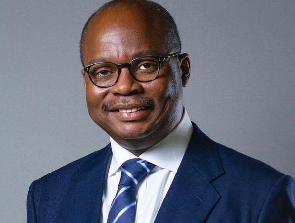There are positive signs of recovery in the country’s banking sector following a challenging 2022, Bank of Ghana (BoG) Governor Dr. Ernest Addison has revealed.
Speaking during a press briefing at the 112th Monetary Policy Committee’s (MPC) conclusion in Accra, he said despite the Domestic Debt Exchange Programme’s (DDEP) impact and the overall difficult operating environment that affected banks’ financial performance, the sector witnessed a turnaround in performance during the first four months of 2023, following closure of the DDEP.
“In the first four months of this year, prudential data show some turnaround in the banking sector’s performance following conclusion of the DDEP, and following the consensus reached among stakeholders on the treatment of losses arising from the same,” he said.
He added that banks have begun rebalancing their portfolios, shifting away from medium-to-long-term investments and increasing their focus on short-term investments and new loans.
This comes after the audited financial statements for 2022 brought to light substantial losses incurred by banks. These losses primarily stemmed from mark-to-market valuation losses on government bonds, which were a consequence of implementing the DDEP (Dynamic Discounted Expected Provisions). Additionally, the banks faced increased impairments on loans and rising operating costs – contributing further to their financial setbacks.
Positive numbers
In 2023, most banks returned to profitability; with higher operating income contributing to a 47 percent increase in profit-before-tax for April 2023 compared to the same period last year. Net income or profit-after-tax for the industry increased by 45.8 percent to GH¢2.8billion in April 2023.
At the previous year-end, the industry encountered significant profit-before-tax losses totalling GH¢8billion; which stood in stark contrast to the GH¢7.4billion profit recorded in the previous year of 2021.
Similarly, pre-tax losses amounted to GH¢6.6billion in 2022 compared to a post-tax of GH¢4.8billion in the preceding year. As a result of these losses, key profitability indicators such as return on assets and return-on-equity turned negative in 2022.
In the first four months of 2023, the sector witnessed positive growth with its return-on-assets increasing from 4.7 percent to 5.5 percent. Similarly, the return-on-equity experienced an upward trend, rising from 22.3 percent to 36.3 percent.
However, there was a significant decline in the capital adequacy ratio (CAR), which dropped from 21.3 percent in April 2022 to 14.8 percent in April 2023. Most banks continued to maintain CAR above the regulatory minimum of 10 percent by the end of December 2022
The year-on-year decline was attributed to the increase in risk-weighted assets caused by fluctuations in exchange rates and losses incurred on mark-to-market investments. But a bigger dip was mitigated due to temporary regulatory reliefs provided for banks to stem the impact of the DDEP, similar to the measures implemented with onset of the pandemic.
Furthermore, the non-performing loans (NPLS) ratio worsened to 18 percent in April 2023, indicating higher loan impairments and heightened credit risks. Nevertheless, the industry’s liquidity indicators have improved following implementation of the revised cash reserve requirement (CRR).
Governor Addison is resolute that the sector’s recovery in the first four months of 2023 demonstrates resilience and a positive outlook, but added continued efforts are needed to address remaining challenges and ensure sustained growth.
Already, it has emerged that a comprehensive strategy to revive the nation’s financial sector is being readied for the end of June as part of the US$3billion facility being provided by the International Monetary Fund.
Under the proposed reforms – which aim to strengthen the sector, restore market confidence and promote lending to the private sector – commercial banks, special deposit-taking institutions and other regulated entities must submit plans for recapitalisation.
Business News of Tuesday, 23 May 2023
Source: thebftonline.com

















